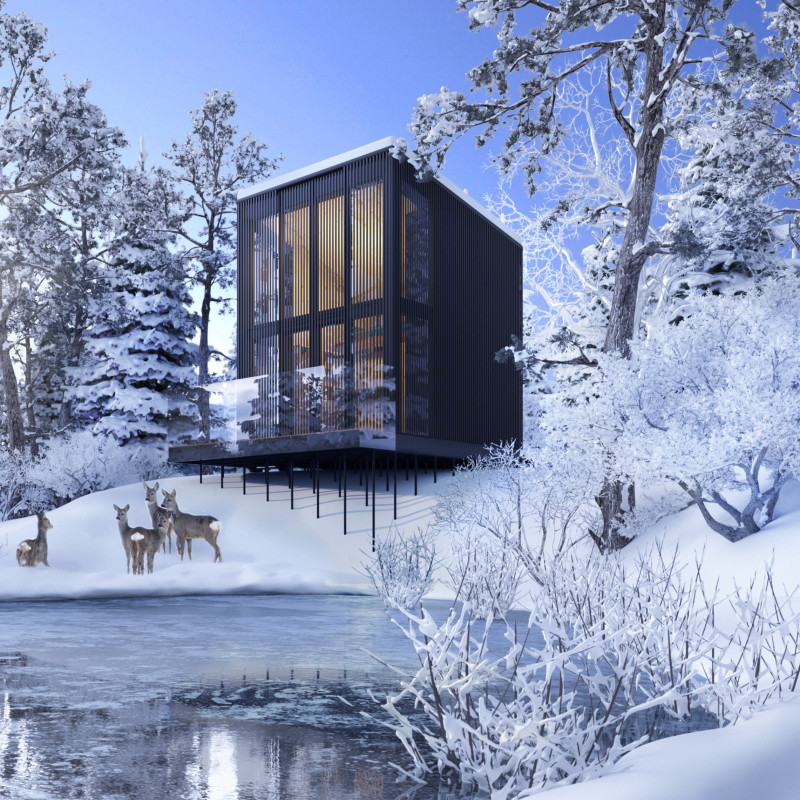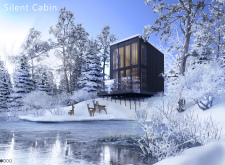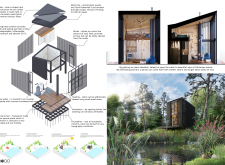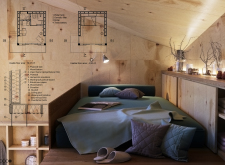5 key facts about this project
Unique Design Approaches
The Silent Cabin employs a compact two-level design that minimizes land disruption and emphasizes functionality. Its sloped roof aids in effective water management, channeling rainwater into an integrated collection system. The choice of materials, including hempcrete for insulation and local spruce wood for the framing, reflects a dedication to biocompatibility and environmental responsibility. The blend of large glazed areas enhances the connection between the interior and the surrounding landscape, promoting natural light while maintaining privacy.
Additionally, the use of renewable energy solutions, such as photovoltaic panels and a Tesla Powerwall II for energy storage, positions the cabin as a model of energy efficiency. These elements allow the cabin to operate autonomously, reducing reliance on external energy sources.
Interior Layout and Functionality
Internally, the cabin is designed for efficient space utilization. The open floor plan with multifunctional areas facilitates communication and interaction among occupants. The living area incorporates a dining space that encourages social engagement, while a compact kitchen and bath are strategically placed to ensure accessibility without compromising comfort. Built-in storage solutions contribute to a clutter-free environment, enhancing the cabin's overall functionality.
The structure's orientation and placement of windows allow for cross-ventilation and thermal regulation, contributing to a comfortable indoor climate. The design encourages an active engagement with the surrounding nature, further enhancing the cabin’s purpose as a retreat.
The Silent Cabin stands as a refined example of how architecture can foster a connection between people and nature while addressing sustainability concerns. For a comprehensive understanding of this project, including architectural plans, sections, and detailed designs, interested readers are encouraged to explore the project presentation for deeper insights into its innovative architectural ideas.


























